Florida’s population growth is squeezing its signature crop. Will oranges survive?
After other local businesses have closed and employees are headed home to make dinner, Vic Story Jr. drives in the dusk to check the irrigation system for a row of tangerine trees.
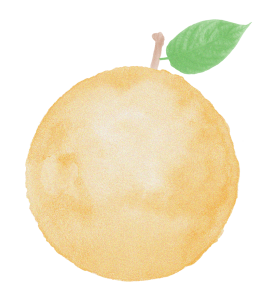
He recently had the grove replanted with a variety called bingo. They better tolerate a devastating disease called citrus greening, but they die back a lot, he said.
A 100-acre subdivision in central Florida presses against the parcel of land, one of the Story Companies’ many groves bordering a residential area.
Story’s workers spray the groves five or six times a year. Drift from the air blast sprayers usually doesn’t pose a problem, but next to a neighborhood, they take special care to mist only on nights when the wind is blowing from the east. They’ve erected a barrier of trees in the eucalyptus family as a wall on the grove’s edge.
“It requires a lot of extra management on our part that we’re good neighbors,” Story said.
Despite watchful care and consideration, plenty of the new Floridians moving in next to groves don’t appreciate the state’s signature crop. “People complain,” said Sharon Garrett, a grove owner in Haines City. “They’re afraid of pesticides, and yet they like living next to trees. But they don’t want to have to put up with the other things that come with it.”
Tractors, mowers and fertilizer sprayers that sidle into public roadways bottleneck traffic. The sound and stench of sprayers peeves your everyday Floridian.
Moreover, the groves look increasingly ripe for developers. They’re already near roads, towns and the places people work. Mix that with the conflicts between agriculture and neighborhoods, toss in a pestilence-mongering insect and you have an industry primed for paving.
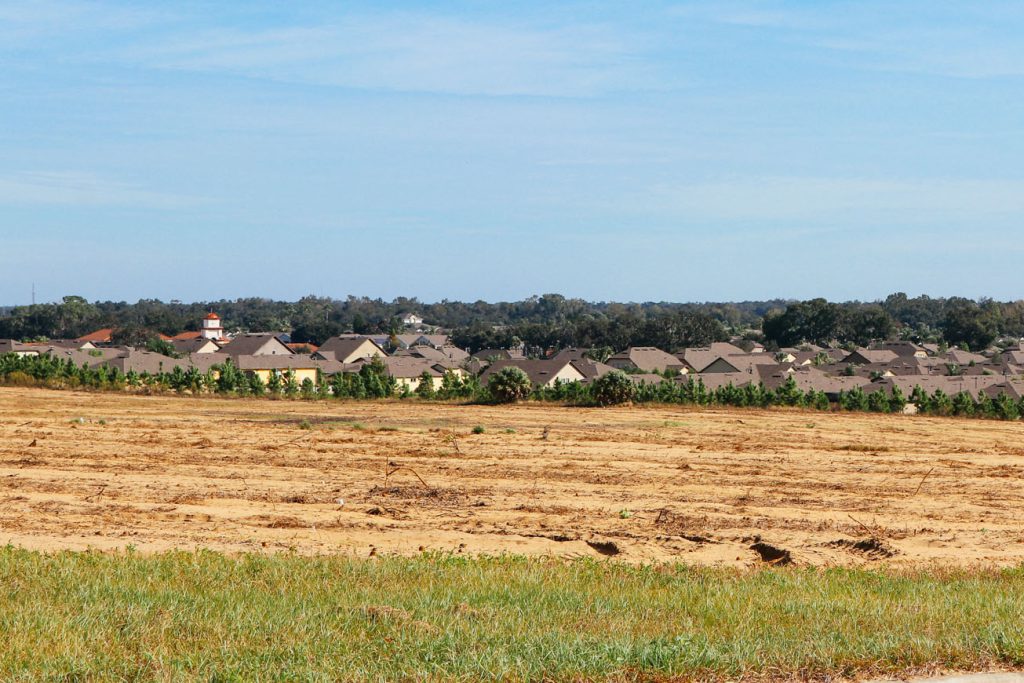
Frank Hunt III of Hunt Bros. Inc. in Lake Wales said the company has sold peripheral plots to development, and he’s watched other growers sell out as urban Florida unfurls.
“(Urbanization) brings more traffic and more people that are not really compatible with agricultural operations or citrus groves,” he said. “So as you see those developments come in, then you’ll gradually see the groves that are in that area gradually go away.”
You might think the tensions would steer developers away from agricultural areas. But Garrett said much of the time they want to avoid the pricier city centers in favor of the cheaper outskirts closer to ag.
“We have development policies in this country that continue to encourage sprawl instead of more vertical construction of real estate,” said Thomas Spreen, emeritus professor of food and resource economics at the University of Florida’s IFAS. “As long as there’s a mentality in this country that spreading out is OK, farmland not only in Florida but all over the country will be under threat from conversion to either commercial or residential purposes.”
Nature strikes back
The bleeding of homeland into farmland is made possible in part by psyllids, the sap-sucking citrus pest from southeast Asia. The bugs coasted from Brazil to Florida in 2005, probably wafted inland by the hurricanes the previous year, Spreen said.
Unrestrained by predators, the bugs carried a fatal bacterial disease called Huanglongbing (HLB), commonly known as greening, from tree to tree as they noshed on leaves and branches.
Symptoms of the disease crop up slowly. By the time growers knew their trees had succumbed, it was too late.
“Part of what makes HLB so insidious is if a mature tree is visited by a psyllid carrying the bacteria, it will not begin to express symptoms of the disease for as long as two years after it’s been infected,” Spreen said.
The trees can have a lifespan of 30-50 years, and it might take 10 before the tree is no longer viable, Spreen said.
“The thing with citrus is you can have what appears to be a perfectly healthy tree in your grove and yet it’s infecting its neighboring trees,” he said. “It takes a long time for it to do its dirty work.”
The U.S. Department of Agriculture and research institutes have worked on possible solutions ranging from the simple system of bagging young trees to implanting a spinach gene into crops to augment their immunity.
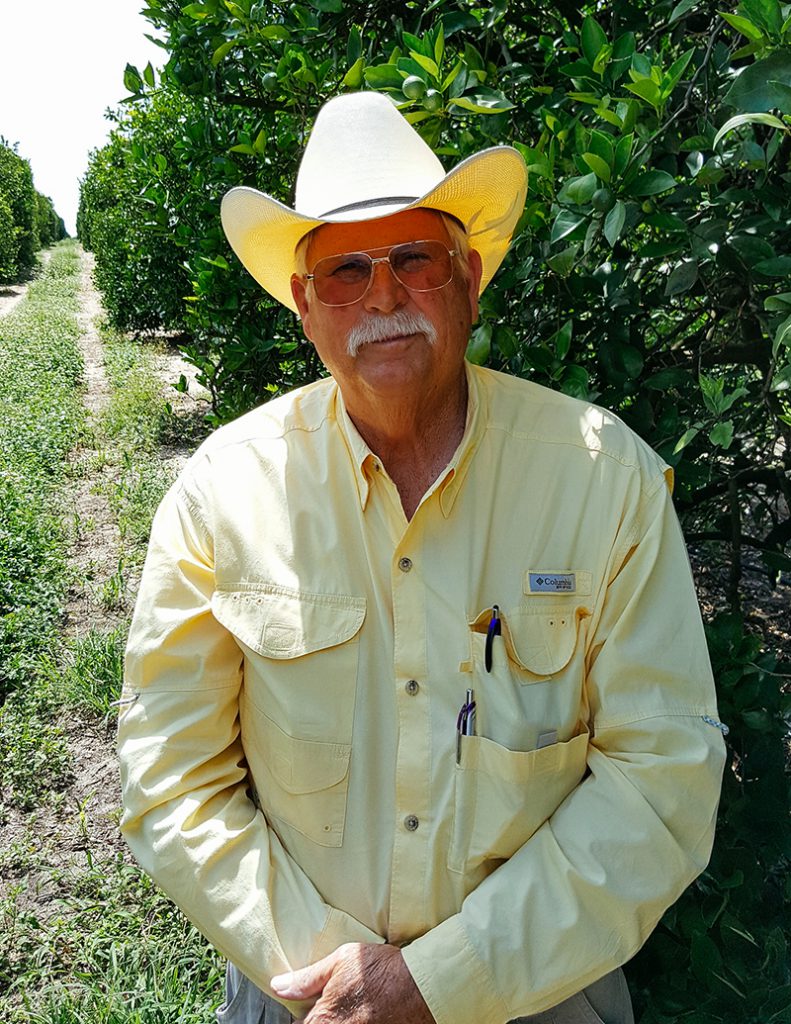
“I think we’re going to learn how to deal with (citrus greening). And then down the road, there’ll be something else. There always is.”
— Florida citrus grower Vic Story Jr.
But the slow growth of trees and uncertainty about new crops’ sustainability leaves growers without long-term solutions, Hunt said.
“Sir Lancelot hasn’t come riding in on a white horse and given us the holy grail yet,” Spreen said.
In the meantime, grove owners are losing planted acres. Hunt Bros. manages about 6,600 acres, less than three quarters of that planted. Of the planted acreage, some hasn’t matured to fruit-bearing age, likely due to greening.
Story said his company is facing similar loss, down to 4,500 managed acres from about 7,000.
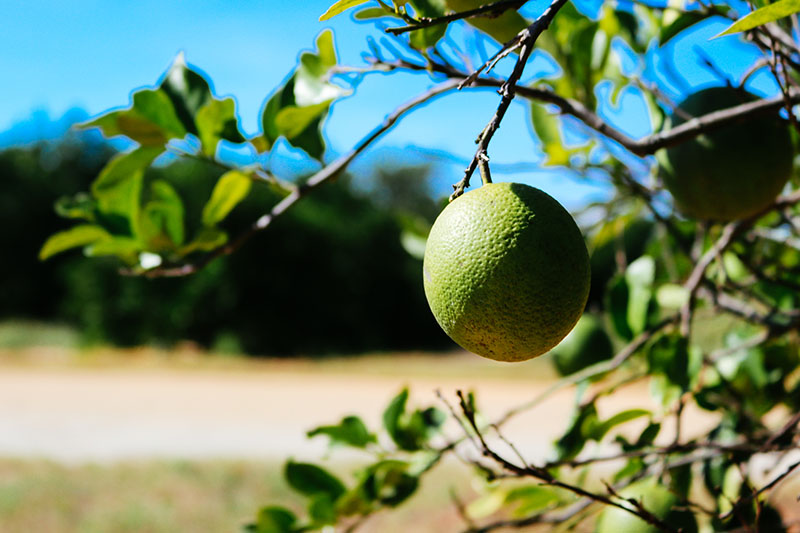
At the same time, neither Hunt nor other growers have received federal aid promised to them
after Hurricane Irma in 2017.
“The average person thinks ‘Oh the growers are doing fine. They’ve got all this disaster aid’,” Hunt said. “But the reality is we’re over a year later, and the majority of growers have not received a nickel.”
Hunt Bros. production began to decline in 2012 after a harvest of 1.9 million boxes. That sum steadily swirled down to 900,000 in 2016-17. Last year, Irma left them with only 500,000 boxes.
The last impacts to hit citrus as hard as greening were the 1980s freezes that decimated both young and old trees in the state.
“You could make an argument that Orlando would not have exploded in the way that it had had it not been for the freezes in the 1980s that destroyed thousands of acres of citrus,” Spreen said.
Similarly, HLB-related yield loss was at 41 percent in 2016, according to a survey of 76 growers by IFAS. Story said citrus predators he saw in his 20s like nematodes, foot rot and blight still affect groves today. He thinks greening will go down as another challenge the industry overcame.
“I don’t think this is going to go away. I think we’re going to learn how to deal with it,” he said. “And then down the road, there’ll be something else. There always is.”
Humans need more green spaces
Converting crops to rooftops, and all the concrete that entails, also means less water soaking back down into Florida’s aquifer, Garrett said. Sprawling town squares, roads and parking lots that stretch for acres reduce the area for rainfall and drainage.
“I really, truly hate it. I mean, I can almost cry seeing it go that way,” she said. “I used to hate to see the woods plowed up for groves. Now I hate to see the grove plowed up for houses.”
Garrett sees the swap of land from groves to development as a menace to Florida’s ecosystems and water supply. She said too many environmentalists vilify fossil fuels when the endless paving over of Florida poses a truer challenge to the state.
For one, development bulldozes the trees that cycle moisture back into the air through transpiration. Additionally, roadways connecting homes and industrial quarters create heat sinks – the so-called “heat island effect,” which warms up towns.
Humans need more green spaces, she said, but they sure aren’t prioritizing it in land-use decisions.
“There’s so much more development than there are parks and open places,” she said. “It’s never gonna catch up.”
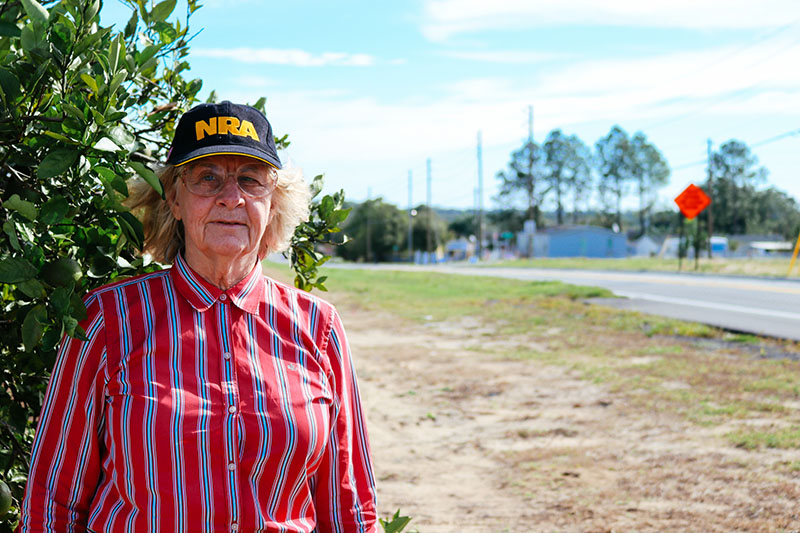
Bob Norberg, who worked with the Florida Department of Citrus as Deputy Executive Director of Research, said he believes people will realize their impact and self-correct. Hunt and Story also have hope that Floridians will reach a balancing point as more people call the state home.
“For one reason or another, all this land won’t sell out to development. It just can’t. The ecosystems in Florida can’t handle that.There’s gonna come a point—and it’ll be by areas, I think—where you just can’t load any more populations,” Story said. “We can’t pave every inch of Florida.”
An expensive glass of OJ
The Citrus Research and Development Foundation has poured more than $120 million into greening research efforts since 2010. Still, greening decimates crops and drains funds for its mitigation. Short of selling their groves, growers must increase the cost of their products to cover the costs.
“You can see precipitous decline because prices are higher than what consumers are willing or used to paying,” Norberg said. “You reach that point where it’s too costly to produce a product that consumers are only willing to pay so much for.”
Norberg said increased prices for your morning OJ, coupled with the fallback in production, has led to a massive closure of packing houses. In the 2010-11 season, 52 packing houses boxed citrus in Florida. The 2017-18 data show a cutback to 18, not all operating at full capacity, said Marisa Zansler, Director of Economic and Market Research at the Florida Department of Citrus.
Without that framework to support the industry, Florida citrus experts say it could collapse.
“If you’re not in that development path, then your neighbors are not tempted to sell out,” Norberg said. “The bigger issue—the more macro issue—is that when enough of those people do sell out, then the infrastructure falls apart.”
Good neighbors
Hunt said Florida is building up its coastlines excessively and needs better growth management practices. Solving citrus’ challenges and the penchant for paving green spaces requires both involvement in local politics and a commitment to maintaining a domestic food supply.
If people don’t care about citrus for food security or the environment, Garrett said, they should at least care about the economic impact of agriculture.
“I have never seen development pay for itself,” she said. “If you’re going to be paving roads, you’ve got to have facilities for the kids to play or practice ball on or swim in a pool or what have you—or schools—whereas ag land does not demand that.”
Spreen agreed, saying citrus provides jobs and supports local government through taxes. Before greening, the industry had a $10 billion impact on Florida. That decreased to $8.6 billion in the 2016-17 season, but Zansler said that number is expected to rise again.
“There are some areas of Florida that are economically disadvantaged by a rapid decline in citrus,” Zansler said, referring to areas such as Polk and Highlands counties where tourists and their spending are sparse.
Spreen also said Floridians should maintain their backyard citrus, which played a role in citrus canker and may also disperse greening.
“If it’s infected, you know, shed a tear and cut it down,” he said.
Norberg believes Floridians have come to the aid of the industry with strong support for research efforts. Short of buying 10 gallons of orange juice a week, the best way to preserve the state’s citrus heritage is to continue to express a desire for a balanced environment.
“From a Florida resident standpoint, I think you’d rather have citrus here than to simply have more neighbors,” Spreen said. “Citrus is a good neighbor, and it’s in your interest that it survives.”
 Peak Florida
Peak Florida